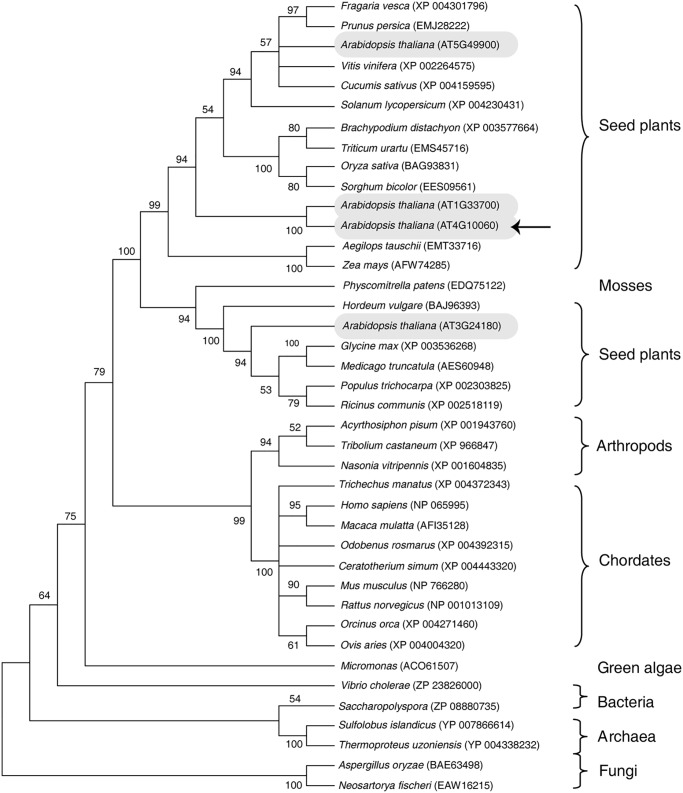Figure 1.
Phylogenic analysis of AtGCD3. The phylogenetic tree of GBA2-type proteins was constructed by the maximum likelihood method using MEGA 6. The leaves of the tree are labeled with the organism genus and species and a database accession number. GBA2-type glucosylceramidases occur across Archaea, plants, and chordates. Four glucosylceramidase homologs (AT5G49900, AT1G33700, AT4G10060, and AT3G24180) in A. thaliana are shown in gray ovals. The arrow indicates AtGCD3, which we investigated in this study.

